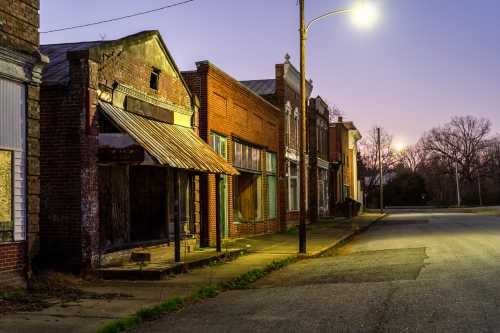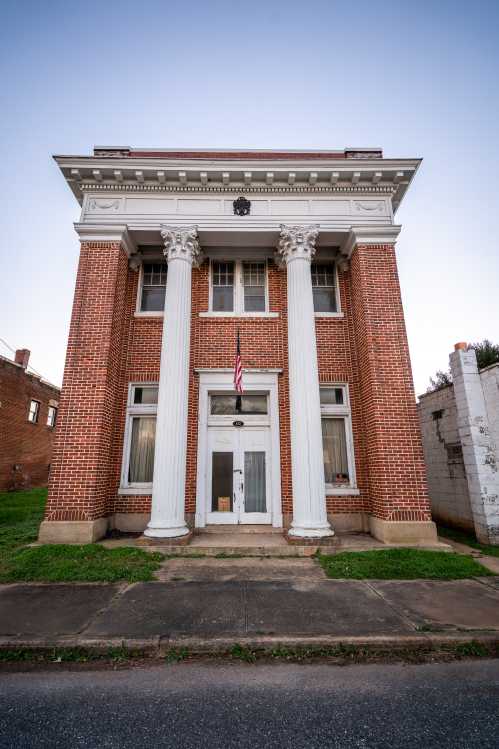Sadly, murders, disappearances, and abductions happen everywhere - even in Virginia. With a number of high profile cold cases over the years, including a few recently, there is no doubt that unsolved murders send chills down your spine - and your sympathies to the victims' families. I could list countless unsolved murders, and I will mention a few, but there are more than just murder mysteries in Virginia. Today, we will look at a few of the mysteries from history that help to remind us that Virginia may be many things, but never boring.
1. The Beale Treasure – millions in gold buried on a farm in Bedford
Ok all of your treasure hunters out there. Tell me what you know. Word on the street is that Thomas Jefferson Beale and a team of 30 men unexpectedly discovered a mother lode of gold and silver in Colorado. Sometime between 1819 and 1821, Beale buried the treasure, estimated to be worth millions, in Bedford County at what is now the site of Johnson’s Orchard and Peaks of Otter Winery. After burying the treasure, Beale and his party set out on another expedition. Knowing their trip would be dangerous, Beale left three coded messages in a locked box with Robert Morriss of Lynchburg.
Beale promised to mail Morriss a key that he could use to decipher the codes should 10 years pass with no word from Beale or his men. The first code contained the treasure’s exact location, a second code described the contents and the third named the members of Beale’s 30-man party along with their next of kin. 10 years came and went and neither Beale nor the key ever arrived. To date, only the second cipher has been broken and the treasure’s whereabouts remain a mystery.
2. The Black Sisters: Mysterious Murderesses
Mary Snead, Caroline Martin, and Virginia Wardlaw may have committed their alleged crimes more than 100 years ago – but their legend and the mystery that surrounds them remains very much alive today. The sisters, called "the Black Sisters" because of their black clothing, came to Christiansburg around 1902, where Virginia Wardlaw ran the Montgomery Female Academy. Her sisters, Caroline and Mary, were widows who helped the unmarried Virginian run the boarding school for girls. During their time there, a number of mysterious events occurred, including the "disappearance" of an illegitimate baby birthed by one of the students and the death of Mary’s son, John, found burned to death in his bed. Just one week before, his mother and aunts had taken out a sizeable life insurance policy on him. Despite a number of other mysterious "accidents" and happenings, it wasn’t until the women showed up in New Jersey in 1909 that authorities caught on. After the suspicious drowning of Caroline’s daughter, Ocey, in a bathtub, police arrested the sisters. Ocey, who was married to her first cousin (and Mary’s son), Fletcher Snead, also left a significant life insurance policy behind.
Caroline was convicted of murder and sentenced to 7 years in a state mental hospital where she later died. It was later suspected that she had likely killed her husband and her young son, Hugh, who died after a fall down the stairs in 1888.
Mary pleaded guilty but got off on a technicality and fled to Colorado. Virginia starved herself to death before the judge could make a ruling. While convicted for the death of Ocey, the full extent of these women’s crimes went with them to the grave. Far from a conclusive outcome, the mystery of the Black Sisters and their serial crimes remain unsolved. The sisters were featured in a 2013 book by Philip Kent Church titled "The Notorious Black Sister: Murder and Madness, Southern Style," which is available on Amazon.com.
3. Bacon’s Secret Crypt: Masonic Myth?
With the international success of books like Dan Brown’s "DaVinci Code" and "Angels and Demons," new interest has shone on the mysteries of the Masons and other secret societies, of which founding fathers like Washington, Jefferson, and Franklin were a part. What many people don’t know is that Virginia has her own Masonic-style mystery – one riddled with political conspiracy and historical intrigue. Rumors have long persisted that Sir Francis Bacon, an Elizabethan philosopher, scholar, and patron of the arts, assembled a secret vault containing nothing short of the blueprints for a new world order that would bring the religions of the world together – as well as a few other "minor" odds and ends, such as several of Shakespeare’s original manuscripts (which Bacon followers claim were written by Bacon himself), an original translation of the King James Bible and a map of Rosicrucian vaults buried throughout Europe that hold other documents with similar significance.
Bacon’s followers claim that Nathaniel Bacon, the colonial revolutionary and leader of Bacon’s Rebellion, buried the vault in 1676 near Bruton Parish Church in Williamsburg. (Some believe the two were related, but genealogical records do not support the claim.) Marie Hall, author and wife of Manley Palmer Hall, the famous 33rd degree Mason, author and mystic, believed that the whereabouts of this mysterious treasure were marked by secret messages, anagrams, and codes found in Sir Francis Bacon’s writings. Despite Hall’s active searching in 1938 and additional research by "Baconists" as recently as 2006, nothing has been uncovered. For now, the secrets of Bacon’s Crypt seem fated to fall into the abyss of historical myth and legend.
4. The Melungeons of Appalachia: The original melting pot?
While the Jamestown settlers and Pilgrims seem to get all the headlines, they may not have been the only revolutionary pioneers to settle early America. History tells that as colonies formed and explorers made their way inland from the coastal settlements of Virginia, communities were discovered already living in the wilderness of Appalachia where modern day Virginia, North Carolina and Tennessee meet. These people, marked by distinct physical characteristics, called themselves the Melungeons. Neither black, nor white, nor Native American, they appeared to be a mix of all three and spoke broken English, Elizabethan English, and mixed Indian dialects. While many had dark skin and hair, others had blue or green eyes, red hair, and beards. Who these people were was never revealed and their ancestral roots have long been shrouded in mystery as the racial segregation of the early south kept them secluded and hidden from recorded history.
Speculation over the ancestry of these mountain folk has ranged from claims that they are descendants of the Lost Colony of Roanoke who fled to the Appalachian Mountains to theories that they are descended from Portuguese sailors who survived a shipwreck and headed inland where they intermarried with escaped slaves and Native Americans. Other theories claim Melungeon ancestry stems from the Black Dutch and the Powhatan Indians. Late 20th century research included ancestors who were Turks and Iberian Sephardi Jews who fled to North America during the Inquisition.
Unfortunately, for centuries in America, being "of color," regardless of the origin, was socially isolating. And, because of the social implications, many of the Melungeon people shunned the idea of African ancestry. However, based on recent DNA studies, Melungeon bloodlines show the highest presence of European and African ancestry, a discovery that shocked many who had grown up believing they were Portuguese or Native American. Fortunately, as time has passed, stigmas previously associated with the Melungeons have diminished and regardless of their true origin – which may never be fully discovered – the fact remains that they share a distinct heritage and culture that deserves recognition and celebration. To learn more, check out one of the many books on the subject, including "Melungeons: Footprints From The Past" by Jack Goin, available on Amazon.com.
5. Colonial Parkway Murders: A decades old mystery
In what looks to be undeniably the work of a serial killer, the Colonial Parkway Murders remain unsolved nearly 30 years later. Between the years of 1986 and 1989, at least 8 people disappeared along the stretch of highway connecting Jamestown, Williamsburg, and Yorktown. The victims included 3 couples, whose bodies were all found in the surrounding area, and another couple who remains missing. While no one has ever been convicted of the crimes, investigators continue to search for clues and answers. The closest they’ve come is the arrest of a Frank Atwell, a former Gloucester deputy sheriff, who had ties to the case – but nothing conclusive ever came from the arrest. No more murders have occurred matching the killer’s profile, but a case like this leaves you wondering if he’s still out there waiting.
6. Route 6. 29 Stalker: A cold case
The "Route 29 Stalker" first came to the public’s attention nearly 20 years ago after a young woman named Alicia Showalter Reynolds failed to show up for a shopping date with her mother. On March 2, 1996, Reynolds was traveling from Baltimore to spend the day with her mother just outside of Charlottesville when witnesses say they saw her talking to man in a blue pickup by the side of the road. Her car was later found with a cloth on windshield, indicating car trouble, but Reynolds was not seen again until her body was discovered more than 2 months later.
After Reynolds disappearance, dozens of women came forward claiming that a man along Route 29 and the surrounding areas had flagged them down, as well, each time indicating that there was something wrong with their car. Some women drove on, a few stopped and were driven to a pay phone without incident, and yet another accepted a ride from the man, but was attacked and barely escaped his car, breaking her ankle in the process.
The only suspect ever named in the case was Darrell Rice, a Maryland man who was arrested for an attempted kidnapping near the time of Reynold’s murder. He was also charged with the attack of the woman on Route 29, and was named suspect in the murders of Julianne Williams and Laura Winans, two young women who disappeared and were later found murdered along the Appalachian Trail in May 1996. Rice was convicted of lesser crimes, but DNA evidence freed him of suspicion in the Appalachian Trail murders – leaving the Route 29 Stalker’s identity a mystery to this day. All that exists is a composite sketch and a lot of questions.
We would love to hear about any mysteries in Virginia that you know of -- from historical to creepy to spine-tingling intrigue. Let us know in the comments below.
Subscribe to our newsletter
Get the latest updates and news
Thank you for subscribing!






























